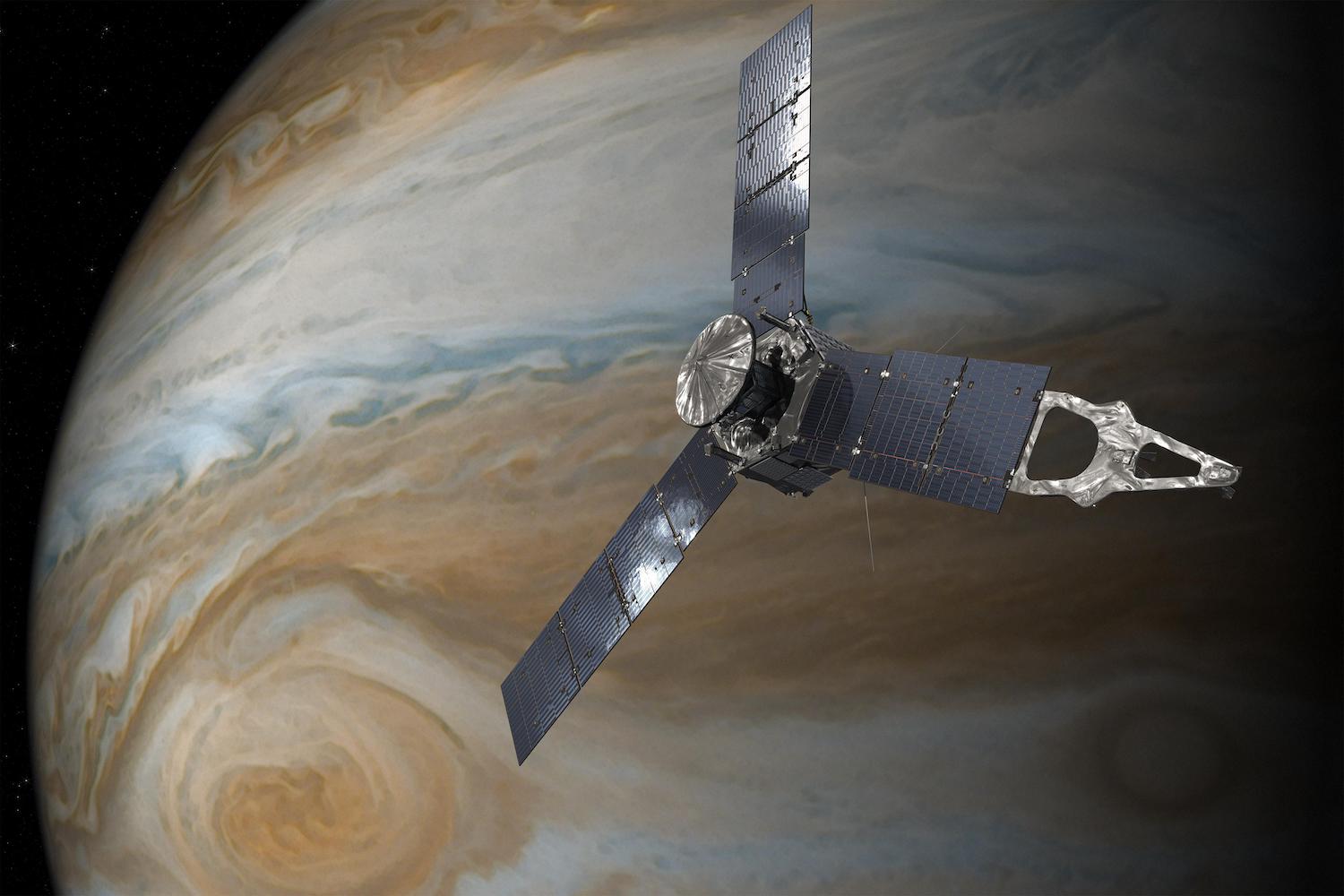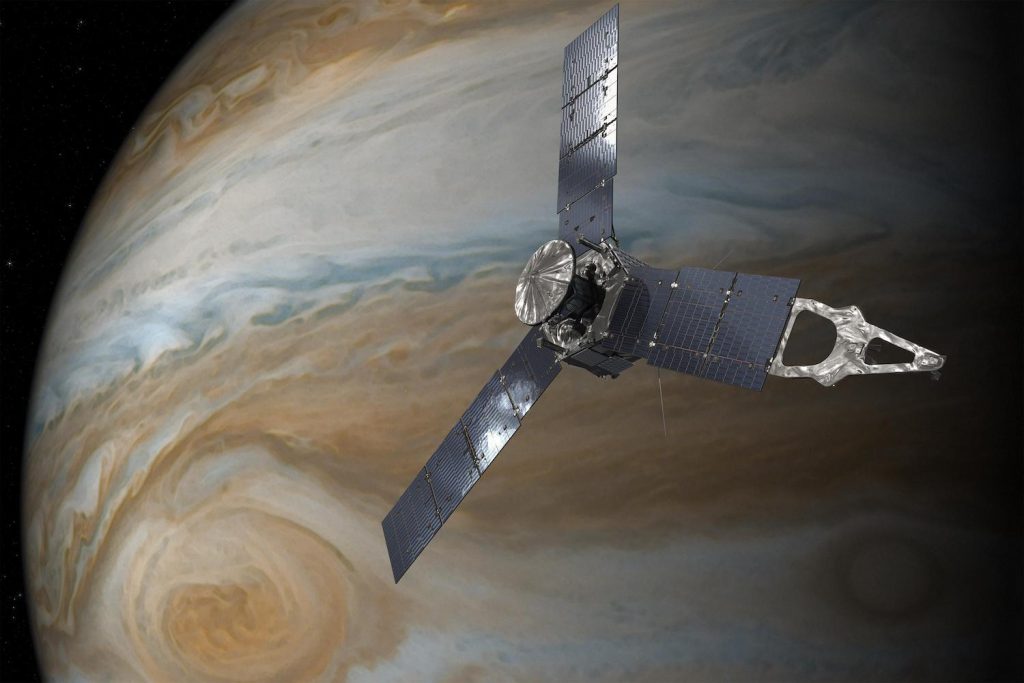For nearly a decade, a large probe has braved the harsh Jovian environment to bring us mesmerizing, close-up views of Jupiter and its moons. But sometimes, the gas giant gets the best of it. The Juno mission recently went into an unexpected safe mode during a scheduled flyby of Jupiter, temporarily powering down its science instruments.
Juno was making its 71st close approach to Jupiter when it entered its precautionary status twice on April 4 as it was flying by the gas giant, NASA recently revealed. It’s not clear exactly what may have caused Juno to go into safe mode, but the space agency believes it may have happened as the spacecraft flew through Jupiter’s radiation belts.
Mission operations reestablished data transmission with Juno and the data indicated that the spacecraft first went into safe mode at 5:17 a.m. ET, which was about an hour ahead of its scheduled flyby. Juno entered safe mode again around 45 minutes after perijove, or its close approach to Jupiter. During safe mode, nonessential functions on the spacecraft are suspended. Juno powered down its science instruments while keeping its communication and power management systems on. The spacecraft rebooted its computer, and pointed its antennas toward Earth for communication.
Safe mode is activated when the spacecraft detects an anomaly. Although the team is still waiting to analyze the data to figure out exactly what went wrong, early indications suggests that Juno was flying through Jupiter’s radiation belts when its safe mode was activated.
Jupiter’s magnetic field is 20,000 times stronger than Earth’s and the strongest of all the planets in the solar system. The planet’s magnetosphere traps charged particles and then speeds them up like a particle accelerator, according to the European Space Agency. The highest fluxes of energetic particles are found in the doughnut-shaped belts around Jupiter’s equator, its radiation belts.
Juno boasts a titanium radiation vault to block high-energy particles from impacting the spacecraft, but that’s sometimes not enough. The spacecraft went into safe mode four times since arriving at Jupiter in 2016.
After reestablishing communication with Juno, the team is working to transmit the data collected before and after it entered safe mode as the spacecraft conducts flight software diagnostics, according to NASA.
Juno is scheduled for an upcoming flyby of Jupiter on May 7, during which it is set to carry out a close approach of the Jovian moon Io at a distance of about 55,300 miles (89,000 kilometers). Hopefully the spacecraft manages to keep its science instruments turned on this time.




